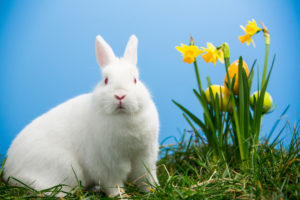
With Easter right around the corner, now is a great time to start thinking about some of the symbols associated with the season. Everywhere you look, you are bound to see ads and decorations featuring smiling bunnies passing out pastel eggs. Still, you may feel like you do not really understand the connections between these symbols and the reason most Christians celebrate Easter in the first place. On the religious side, Easter is the day Jesus is said to have risen from the dead and returned to Earth. How this story connects to rabbits and eggs requires some explanation.
To fully understand where some of these symbols originated, you need to peer backwards through history. Explore some of these stories and learn a bit more about how world religions and symbols influenced the direction of many Christian practices around Easter.
Love Is in the Air
Easter is what is known as a “moveable feast” in the world of holidays. This means it does not have a set date each year. No matter when it falls, it always takes place in the spring. It is this placement that has led to some of the more iconic images. For as far back as recorded history goes, people all over the world have associated this time of year with rabbits. This is no shock, as the ancestors of modern rabbits are said to have already dispersed around the world somewhere around 40 million years ago.
Since rabbits were a common sight across Europe in the spring, many pagan tribes used the animal as a symbol of fertility and the coming of warmer days. While there is no concrete evidence linking the Easter Bunny to these early pagan groups, it is an easy connection to make. As Christians adopted more and more pagan practices with the spread of Christianity across Europe, it is highly likely the rabbit became associated with Easter as new stories mixed with old customs and rituals of the season.
Egg-cellent
While on the topic of pagan traditions, it is important to turn to the custom of hiding eggs for Easter. In modern times, this activity is mainly geared toward children and involves adults hiding plastic eggs filled with candy or money around a home. Held both indoors and outdoors, these egg hunts are quite popular amongst both religious and secular families in America and many nations of Europe. As with the idea of the rabbit, the association of eggs with Easter seems to date back to pagans and their various springtime rituals.
Though there are a number of connections between pagan beliefs of spring and eggs, there are other reasons for this association. Before Easter, many Christians observe Lent, a period of fasting and denying oneself specific pleasures. In the past, eggs were considered a common food to give up during Lent. In order to prepare for the excitement of being able to consume eggs once more, many people of all ages would decorate the eggs with paint in the period leading up to Easter.
Sweeter Things
Finally, you might want to know how eating copious amounts of candy got linked to the resurrection of an important holy figure. While eggs and bunnies have deep roots, the link between this celebration and candy only goes back a couple of decades. As new candies developed in Germany, England, and the United States, it became customary to give the sweets as gifts during certain holidays. Jellybeans were the first to hit the scene and became immediately associated with Easter, setting the stage for other seasonal candies like Peeps in later years as people sought new options for gifts.
Easter is a strange mix of religious lore and pagan symbols that have been observed for centuries. As time marches humanity away from these origins, it can be important to look back to remember how it all began.

